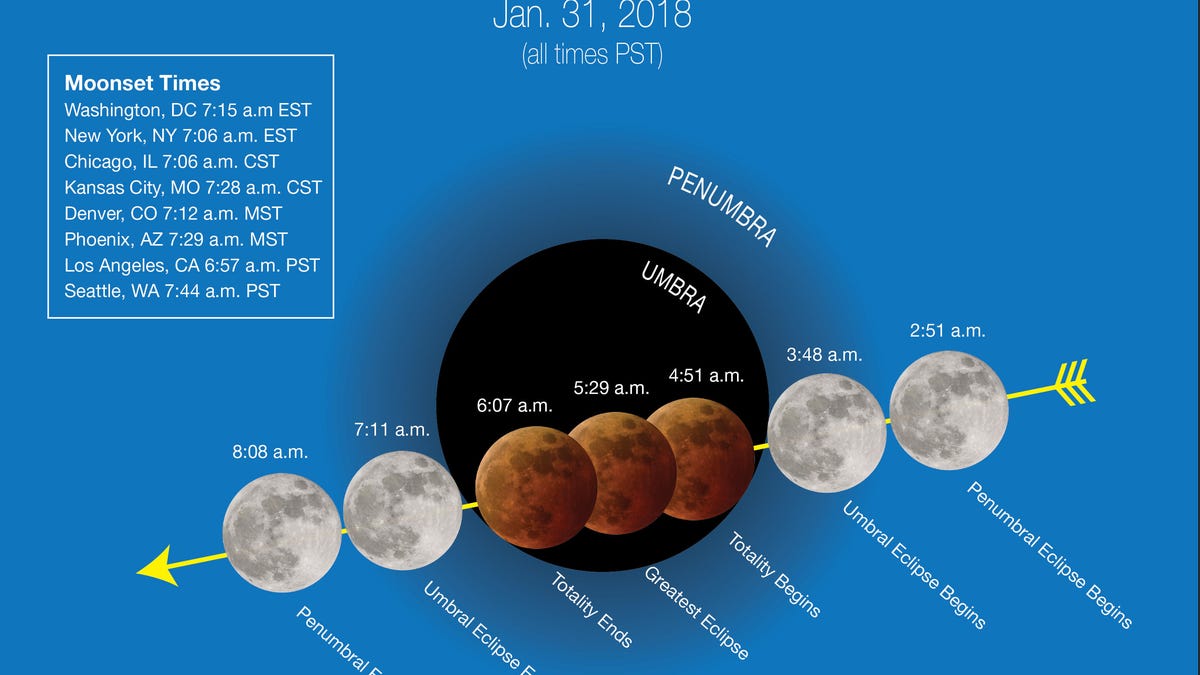Super blue blood moon prowls across the sky on Jan. 31
The upcoming supermoon will also deliver a lunar eclipse to people in the right viewing locations. You can catch all the action online too.
It sounds menacing, but a super blue blood moon actually gets its catchy name from a perfect storm of lunar occurrences. The next one is coming Jan. 31. There will be no werewolves, but there will be a spectacular celestial sight on tap for moon watchers.
Let's pull that name apart. A supermoon happens when a full moon is at its closest point in orbit to Earth (also known as perigee). A blue moon is the name given to a second full moon within a calendar month. We already logged a supermoon on Jan. 1. A blood moon happens during a total lunar eclipse when the moon takes on a reddish hue.
The lunar eclipse will be visible in parts of North America, Australia, the Middle East, Asia and Russia. You can consult NASA's total lunar eclipse map to find out if and when it will be viewable at your location.
"Weather permitting, the West Coast, Alaska and Hawaii will have a spectacular view of totality from start to finish," says NASA lunar blogger Gordon Johnston. Moon viewers in those areas will need to get up very early in the morning. Here's more on best viewing times.
If you don't live in one of those zones, or if weather gets in the way, you can still enjoy the experience by tuning in to NASA TV's live feed. The Griffith Observatory in Los Angeles will also present a live online look at the eclipse.
Johnston's delightful moon blog covers all the other names associated with this particular Jan. 31 moon: the long night moon, the wolf moon, the snow moon, the ice moon, the old moon or the moon After yule. Whatever you want to call it, it should be beautiful to behold.
First published Jan. 19., 10:13 a.m. PT.
Update, Jan. 27 at 9:52 a.m. PT: Adds link to information on how to see the moon in person or online.
Rebooting the Reef: CNET dives deep into how tech can help save Australia's Great Barrier Reef.
The Smartest Stuff: Innovators are thinking up new ways to make you, and the things around you, smarter.


